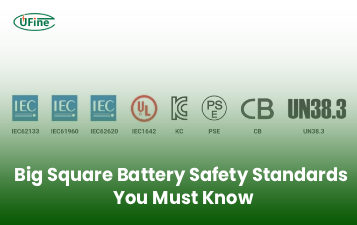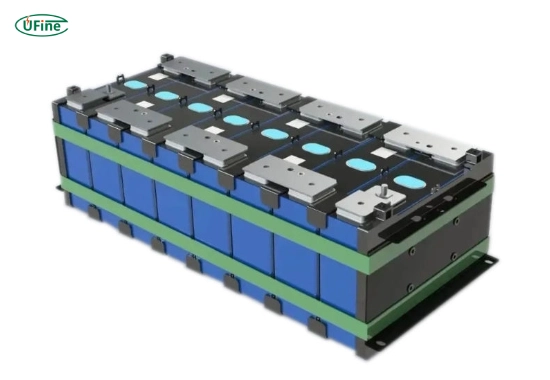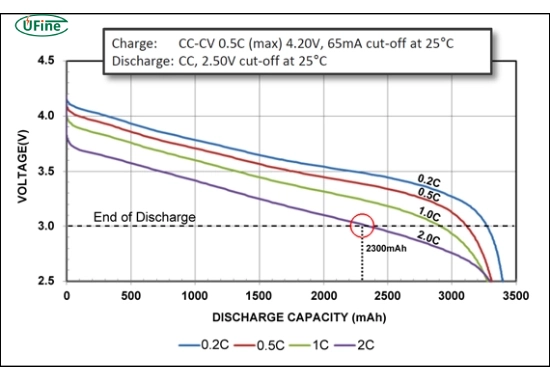
- Part 1. What is an amped lithium battery?
- Part 2. What does current draw mean in batteries?
- Part 3. What is the discharge rate of a lithium battery?
- Part 4. Why do current draw and discharge rates matter?
- Part 5. How to calculate current draw and usage time?
- Part 6. What affects the discharge rate of an amped lithium battery?
- Part 7. How to optimize discharge rate for longer battery life?
- Part 8. What is the ideal discharge rate for amped lithium batteries?
- Part 9. How does a battery management system help?
- Part 10. What tools can help monitor current draw and discharge?
- Part 11. FAQs about amped lithium battery
What is the best way to optimize current draw and discharge rates for an Amped lithium battery?
To optimize your Amped lithium battery, you need to understand how current draw and discharge rates affect its lifespan and performance. Managing these two factors properly ensures your battery lasts longer, charges faster, and powers your devices more efficiently.
Lithium batteries are popular today because they are lightweight, powerful, and have a long lifespan. But even the best lithium battery can lose performance if not used correctly. In this guide, we’ll break down everything you need to know about current draw, discharge rates, and how to get the most out of your Amped lithium battery.
Part 1. What is an amped lithium battery?
An amped lithium battery is a high-performance lithium-ion battery designed primarily for outdoor, marine, and recreational use. It is commonly used in kayaks, boats, RVs, and solar setups because it is lightweight, reliable, and has a high energy output.
Unlike traditional lead-acid batteries, Amped lithium batteries offer:
- Longer lifespan
- Faster charging abilities
- Lighter weight for easy transport
- Consistent power delivery
These batteries are built with advanced battery management systems (BMS) that protect against overcharging, overheating, and deep discharges.
Part 2. What does current draw mean in batteries?
Current draw refers to the amount of electrical current (measured in amps) that a device pulls from a battery while operating. Every device has a different current requirement depending on its size and power needs.
For example:
- A small fish finder may draw 0.5 to 1 amp
- A trolling motor may draw 30 to 50 amps
The more current your device draws, the faster your battery discharges.
Part 3. What is the discharge rate of a lithium battery?
The discharge rate is the speed at which a battery delivers energy. It is usually shown as a C-rate, which tells you how fast the battery can safely discharge.
Here’s a simple way to understand it:
- A 1C discharge rate means the battery will fully discharge in one hour
- A 0.5C rate means it will discharge in two hours
- A 2C rate means it will discharge in 30 minutes
For example, if you have a 100Ah Amped lithium battery and you discharge it at 1C, you are drawing 100 amps and will drain the battery in an hour.
Part 4. Why do current draw and discharge rates matter?
Both current draw and discharge rates directly impact:
- Battery lifespan
- Performance
- Charging efficiency
- Heat generation
Drawing too much current too quickly can overstress the battery and shorten its life. It can also cause the battery to heat up, which is dangerous and reduces efficiency.
Maintaining a proper discharge rate ensures:
- Safe operation
- Steady power output
- Longer cycle life
Part 5. How to calculate current draw and usage time?
To figure out how long your battery will last, you can use this simple formula:
Battery capacity (Ah) ÷ Device current draw (A) = Usage time (hours)
Example:
- Battery: 50Ah
- Device draw: 5A
- 50 ÷ 5 = 10 hours of usage
This helps you plan your trips, know when to recharge, and avoid running out of power unexpectedly.
Part 6. What affects the discharge rate of an amped lithium battery?
Several factors can influence the discharge rate:
- Temperature: Cold conditions can reduce discharge rate and capacity
- Battery age: Older batteries don’t perform as well
- Current draw: High current devices increase discharge rate
- Battery health: Damaged or poorly maintained batteries discharge faster
- Depth of discharge (DoD): Deeper discharges reduce overall battery life
To get the most from your Amped lithium battery, you should always operate it within recommended specs.
Part 7. How to optimize discharge rate for longer battery life?
Here are some proven tips to extend the life of your Amped lithium battery:
- Avoid full discharges: Keep the battery above 20% whenever possible
- Use energy-efficient devices: Lower current draw means slower discharge
- Keep it cool: Heat reduces performance and lifespan
- Charge before full depletion: Regular top-ups are better
- Use a smart BMS and charger: These prevent overcharging and overheating
Following these steps will help keep your battery working at its best for years.
Part 8. What is the ideal discharge rate for amped lithium batteries?
For most Amped lithium batteries, the ideal discharge rate is between 0.5C and 1C. This range offers a good balance between performance and longevity.
For example, if you have a 60Ah battery, an ideal current draw would be between:
- 30 amps (0.5C)
- 60 amps (1C)
Staying within this range prevents the battery from overheating and helps you get the maximum number of charge cycles.
Part 9. How does a battery management system help?
The Battery Management System (BMS) is the brain of the battery. It monitors and controls:
- Voltage
- Temperature
- Current draw
- Charging and discharging rates
It protects against:
- Overcharging
- Over-discharging
- Short circuits
- Thermal runaway
With a good BMS, your Amped lithium battery automatically adjusts to prevent damage and improve overall performance.
Part 10. What tools can help monitor current draw and discharge?
Several tools can help you track and manage your battery’s performance:
- Battery monitors: Display real-time voltage, amps, and usage time
- Multimeters: Measure current and voltage manually
- Bluetooth apps: Many Amped batteries connect to mobile apps for live data
- Smart chargers: Show how fast your battery is charging and when to stop
Using these tools regularly lets you catch issues early and keep your battery in top condition.
Part 11. FAQs about amped lithium battery
How long will my Amped lithium battery last?
It depends on your usage, but most Amped lithium batteries can last 2000 to 5000 cycles with proper care.
Can I run high-draw devices with my Amped lithium battery?
Yes, as long as the current draw is within the battery’s specifications. Always check the maximum continuous discharge rate.
Is it bad to fully discharge a lithium battery?
Yes. Full discharges reduce battery life. Try to recharge when the battery reaches 20-30% for best results.
What happens if I exceed the recommended discharge rate?
Exceeding the discharge rate can cause overheating, voltage drops, or battery failure. The BMS may shut down the battery to prevent damage.
How can I tell if my current draw is too high?
Use a battery monitor or Bluetooth app to check real-time amps. If it’s consistently over the battery’s rated output, reduce your device load or use a higher-capacity battery.
Related Tags:
More Articles

Big Square Battery Safety Standards You Must Know
Learn key safety standards for big square batteries to avoid fire risks, shipping delays, and compliance issues in EV, industrial, and energy storage projects.
Big Square Battery Applications in Solar & Industrial Equipment
Big square batteries deliver high capacity, stable output, and long life for solar, industrial, and backup power. Explore key uses and advantages.
Big Square Battery vs Cylindrical Battery: Complete 2025 Guide for EVs, ESS & Industrial Devices
Choosing the right battery is key for designers and engineers. Compare big square vs cylindrical batteries to find the best fit for your application.
How to Choose the Right Big Square Battery for Your Device?
If you’re choosing a big square battery for EVs, solar, or mobility devices, this guide helps you pick the right solution for real-world needs.
Big Square Battery Complete Guide: Types, Uses & Buying Tips
If you are choosing a big square lithium battery for EVs, solar, RVs, or AGVs, this guide helps you select the right NMC, LFP, or LTO solution with examples.




